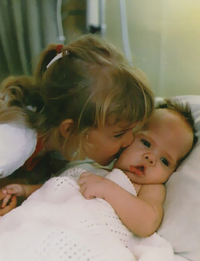A new study ( But only of two people) shows that it is possible to increase muscle strength in Myotonic Dsytrophy. This study seemed to show that the exercise program needs to be adopted to the individual so that they maintain the exercise program. The Muscle strength increase seems to be linked to how diligent the person followed the training regime. From the Study:
Our results suggest that muscular adaptations linked to muscle growth can occur in DM1 as demonstrated by the CSA increase of type I and type II myofibers. Training might also influence the distribution of myofibers, in favour of type II. The myogenic and inflammatory markers evaluated do not seem to be modulated by the training stimulus in our participants. Compliance to the program seems to be an important factor to consider. Patient’s preferences regarding training regimen should be considered in the perspective of personalized training/precision medicine. It should be noted that beyond the positive impact of training on muscle adaptations, it could also bring positive changes in other organ systems. Further studies comprising a higher number of participants and controls are needed to validate our findings and determine to which extent and how skeletal muscles of DM1 patients adapt to strength training.
Excercise-Training-Program-DM1




